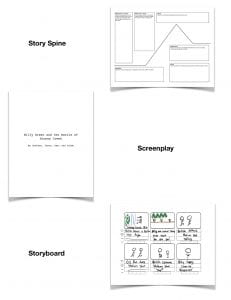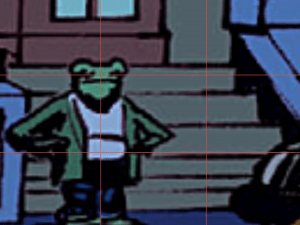Hello everyone and welcome back to another very long summary of my learning. That’s right, it’s time for another TPOL. If you don’t know what TPOL is I will explain it to you. TPols are what are called transitional presentation of learning. During I believe your 10 minutes of presenting, you have to choose 3-4 projects or things you did that really showed your growth as a learner throughout the year. It also has to answer the question “why I think I’m ready for PLP next year?” Except unfortunately I am no longer enrolled in the program anymore so there’s a slight twist to mine. Instead of explaining why I think I’m ready for PLP 10, I will explaining the things that might help me in the future and the places I’ve grown the most.
Preparation
First, let’s start off with some technical skills I learned this year. In Grade 9 this year, we’ve been mostly focused on creating videos. This means we have to learn the steps of creating a great video. You can’t create a video with only cool shots and angles. A video usually has its own story, and that’s what I want to talk about first. The pre-preparation for filming a video.
Before I learned all this, I would just go out and shoot a video. Sometimes I would find that I’m missing clips that might be important. This year, a few really important things helped me. It’s not I didn’t know these things before, it’s just that I didn’t use it. The steps are the screenplay, storyboard, and story spine. Usually you start by creating a story and putting them in a story spine. This would include the exposition, rising action, climax, etc. After you did this, you put these things into a screenplay. The screen play includes your filming location, script, and everything you need to know before you hit the record button. But wait, there’s one more step left. The storyboard. A storyboard helps you visualize what the shot is going to look like. The angle, setting, and the characters in that specific shot. Each steps build up to the other. It’s important to do all three and not skip any of them.
So where my evidence of me doing all of this? Well, I don’t know if you’ve seen this but one of the projects this year we had to create a video that explains a specific part of Canadian History in the 1800s. So my group decided to do a video on Billy Green, a Canadian scout that led the British troops to win the battle of Stoney Creek. All three of the steps are used to create the video we had.
In conclusion for this section, it made it easier for me to create a complete video that has a good storyline and many different aspects within it. The aspects, are what I want to talk about next.
Filming
This year, not only did I learn the important steps to create a video, I also learned the steps to filming a video. This includes the angles, lighting, transitions, and many more. First off, I want to start with the most helpful and important thing out of all of these. The thing is the lighting. Think about it, if you see a person in front of a camera in a dark room with a hat on, you can’t see his face. That’s when it means the lighting is so awful, the angles, rule of thirds, audio, and every possible thing you can think off, doesn’t help. If you can’t see the person, or the place, or the object, nothing matters. So lighting is probably one of the most important things I look out for when I film my videos. The next thing that I learned that was important are the rule of thirds. This means having the person or object one 1/3 of the shot. Down below is an example of what I mean.
This year, these two things took my videos to the next level, not only my history minute video showed this, but many more such as the angles film I created. The angles video is a short video that shows all of the angles I’ve learned and used this year. The rule of thirds is also used in the video.
All of the things such as angles, transitions, audio are important. Personally, the ones that helped me the most is the rule of thirds, and the lighting. I think these are the two things that can help me create a better video.
So that’s basically it for the video creating side. To me, showing my work through a video is a very good way to present what you have learned throughout each project. It’s a fun but challenging way to do it. That’s a reason why I enjoyed PLP 9 a lot this year.
Time Management
Now I want to talk about one of the most important things that helped me this year. The thing is actually called “Things.” Things is an app that allows you to organize your work into a checklist and every time you finish something, you would check that thing off. How the app has help me is by organizing my work, putting a deadline, and reminding me to do it. It’s helped me massively towards my time management. This year, I’ve only handed 2-3 assignments late and that’s a big improvement. All of the big project, such as blog posts, has always been handed in on time. That’s because “Things” helped me. Things is only one of the sections that helped me with my time management. The other one is time blocking. On calendars, an default app for all Apple devices, allows you to organize what you are doing each day. “Things” is also connected to calendars so when these two things combine, one tells me what task I have to do, and the other tells me when to do it. This was a big issue for me this year since my schedule has been packed with different outside of class activities. Fortunately, a new course we had called PGP came and saved the day. PGP may not be the greatest class, but it’s a very helpful one.
It’s been a rather short year for me. Everything went by so fast. I’m sorry that this is a rather long blog post for you guys to read but I have two more things to say. The first one is what do I need to continue to work on? Well time management is a big task. It can’t be achieved within minutes, hours, days, or maybe even month. Time Management requires action that will create a habit. The habit that you have created is the one that will lead you. Now you can go both ways with the habits. You can be Proactive or Reactive. For me, being proactive is the way I want to go. It means taking responsibility for the things you do and making what you want to happen. Not waiting for it to come. It’s one of the habits from the book “7 habits of highly effective teen.” For me, I need to develop this habit more so I can achieve the bigger goals. This is something I need to work on starting now. I believe if I master the habit of being proactive, I can improve my time management.
Conclusion
The next thing I want to talk about is the sad news. Unfortunately, this is not a TPol for me. It’s more like an FPol. I feel like I need to start getting used to working in a high school like a “normal” kid. I’m not saying PLP is bad, I liked it a lot. What I’m saying is I think that normal school will prepare me for University better. I get a better understanding of what it’s like to be using textbooks, writing tests and essays, and carrying around a heavy backpack will be like. The other unfortunate news is I won’t be writing blog posts like these anymore which is something I will miss a lot.
Let’s leave this post on a happy note. I think this school year has helped me learn a lot about not just being a student but a normal person as well. It taught me the ways of how to manage my time even if I haven’t completely mastered that. I improved a lot with working with filming and creating all types of things to represent my learning. Anyways, this has been a great year for me and I hope for you guys as well. Goodbye.
– Sam Cui






Leave a Reply